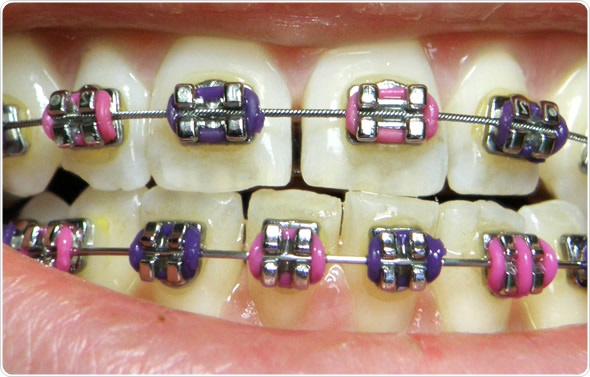Comprehensive Guide to Orthodontics Procedures for Correcting Dental Imbalances
Understanding the ins and outs of each procedure, including their systems, benefits, and prospective disadvantages, is vital in making educated decisions concerning one's orthodontic treatment. As we browse through the detailed guide to orthodontic procedures for dealing with dental imbalances, the intricate information of each approach will unravel, shedding light on the path towards a harmonious and useful oral alignment.
Orthodontic Procedures Review

Routine modifications and monitoring are critical components of orthodontic treatment to guarantee progress is on track and to make any kind of essential adjustments along the way. By undertaking orthodontic treatments, individuals can not only accomplish a straighter smile yet likewise improve their overall dental health and wellness and function.
Conventional Dental Braces: Just How They Function
When thinking about orthodontic treatments for oral misalignments, typical dental braces attract attention as a time-tested approach for remedying teeth positioning. Traditional braces contain brackets, wires, and bands that interact to apply continuous pressure on the teeth, slowly relocating them right into the wanted placement. The brackets are connected to the teeth using a special adhesive, and the cables are threaded with the braces. By readjusting the stress of the cords, orthodontists can control the direction and force applied to each tooth, guiding them into proper placement with time.
One trick element of exactly how standard braces job is the procedure of bone improvement. As pressure is related to the teeth with the braces, the bone surrounding the teeth is improved to sustain the brand-new tooth settings. This remodeling is important for the long-term security of the dealt with positioning. Individuals will require normal modifications at the orthodontist's office to make certain the dental braces continue to apply the right pressure for effective teeth activity.
Unnoticeable Aligners: Benefits And Drawbacks
These clear, tailor-made trays are virtually unnoticeable when worn, making them an attractive alternative for people seeking a more visually pleasing orthodontic therapy. People can remove the aligners before eating or brushing their teeth, minimizing the threat of food obtaining stuck in the device and simplifying the cleaning process.

Surgical Orthodontic Options
Surgical treatments in orthodontics existing practical options for resolving intricate dental imbalances that may not be properly fixed through traditional orthodontic therapies. While typical braces and undetectable aligners can correct numerous orthodontic problems, particular instances require medical treatment to accomplish optimum results. Surgical orthodontic alternatives are normally recommended for extreme malocclusions, considerable jaw disparities, and cases Read More Here where the underlying bone structure requires adjustment to attain proper positioning.
One usual medical orthodontic procedure is orthognathic surgery, which entails rearranging the jaws to fix practical problems such as trouble talking or chewing. This surgical procedure is often done in cooperation with an orthodontist who assists line up the teeth prior to and after the treatment. Surgical orthodontics may also include treatments to subject affected teeth, eliminate excess periodontal cells, or improve the jawbone to create a more harmonious face account.
Prior to taking into consideration surgical orthodontic options, clients go through a detailed analysis to determine the necessity and prospective benefits of such interventions. invisalign. While surgical treatment might appear overwhelming, it can significantly improve both the feature and visual appeals of the smile in situations where conventional orthodontic treatments fail
Retainers and Post-Treatment Care

Post-treatment treatment includes following the orthodontist's directions carefully. This might include correct dental hygiene practices, going to follow-up visits, and using the retainers as recommended. Failing to abide by post-treatment care instructions can result in relapse, where the teeth slowly move back in the direction of their initial positions. Regular retainer wear, great oral health, and routine dental exams are necessary for preserving the results achieved via orthodontic surgery Home Page and ensuring the lasting stability of the dealt with dental alignment.
Verdict
To conclude, orthodontic treatments supply various alternatives for correcting dental imbalances. Traditional braces make use of metal brackets and cables to change teeth into appropriate placement. Invisible aligners supply an even more very discreet alternative however might not appropriate for all cases. Surgical orthodontic choices are offered for extra severe misalignments. Retainers are typically utilized post-treatment to keep the brand-new alignment. In general, orthodontic treatments can properly boost oral health and dentist open on saturday aesthetic appearance.
As we browse with the detailed overview to orthodontic treatments for remedying dental misalignments, the elaborate details of each method will unravel, losing light on the course toward a functional and unified oral placement. - cumming braces
One of the most typical orthodontic treatments is the use of braces, which consist of steel braces and cables that apply mild stress to slowly shift teeth into the wanted placement.When taking into consideration orthodontic treatments for dental imbalances, standard braces stand out as a time-tested approach for remedying teeth positioning. Additionally, unseen aligners might not be suitable for intricate orthodontic concerns that need even more considerable teeth movement, as they are typically advised for moderate to moderate situations. Retainers are customized orthodontic tools created to hold teeth in their fixed positions after the conclusion of orthodontic treatment.